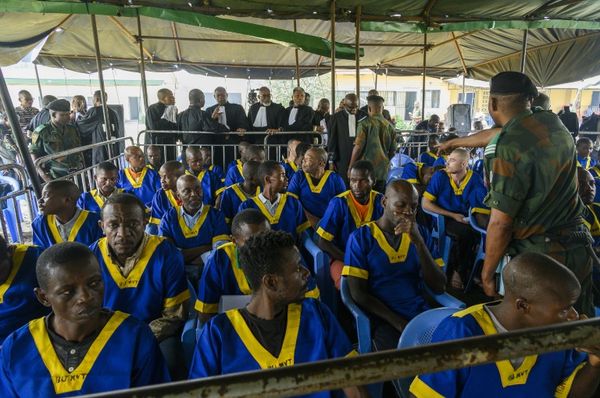
Hundreds of unaccompanied children have crossed the border from Sudan into Chad in recent weeks as fighting separates families and forces minors to make the arduous journey to safety without their parents.
Humanitarian workers say “more and more” children are arriving alone in the neighbouring country, to which more than 100,000 refugees, about 60% of them under-18s, have fled since fighting erupted between rival military factions in mid-April.
After a more orderly first wave of refugees – who had decided to leave Sudan before the conflict came to their home villages and had had the chance to prepare a little – those arriving more recently had often fled the latest surge in fighting, said Jacques Boyer, the country director for the UN Children’s Fund (Unicef) in Chad.
“At the beginning we weren’t seeing a lot of unaccompanied or separated children, because the children were moving with their families,” he said. “But now for three weeks this population has been escaping the fighting and the bombing, [and] there are more and more unaccompanied children.”
Boyer said 267 unaccompanied children had so far been identified, but that that figure was certain to be an underestimate. “There are far more kids that are probably unaccompanied,” added Boyer.
A colleague had met a 14-year-old boy from Darfur who had become separated from his parents when unidentified armed men attacked their village, he said. “This young boy explained [that] there were rumours the village would be attacked. So the villagers were preparing to flee.
“But while they were preparing [to leave], the village was attacked by unidentified gunmen and the population escaped in panic. And the child was separated … from his parents and he followed his neighbours. He crossed the border with the neighbours, not the parents.”
As soon as a lone child is identified, relief workers on the ground will try to find their families – but that can be a considerable challenge. In the case of the 14-year-old, Boyer said, the neighbours and the child are trying to find where the biological parents are.
“But … the border between Chad and Sudan is more than 1,000km and even if the parents are probably not that far from where the child is, if they have succeeded to cross the border, we have dozens of thousands of refugees.
“So it’s really difficult to identify where the parents are,” he said. “In addition, the phone network is not good.”
The task of reunification became easier, he said, if the families and children went to official camps where they were properly registered in the refugee system. “If the parents stay in host communities then it will take more time,” he said. “It doesn’t mean it’s impossible, but it will take more time.”
In any humanitarian crisis, he added, unaccompanied minors were “the most vulnerable” of the vulnerable, with child labour or sexual exploitation a real risk. In an attempt to mitigate this, UN workers try to ensure they are kept with adults they know “in a kind of family environment”.
With the Chadian Red Cross, Unicef is also putting in place “child-friendly spaces” where under-18s can receive psychological support. “Because, as you can imagine, most of these kids have gone through serious psychological trauma. They saw gunmen; they heard the bullets,” said Boyer.
Concerns about lone children only add to the considerable worries humanitarian workers have about the tens of thousands of young people fleeing Sudan. Cases of measles have been identified among child refugees and more than 350 have been diagnosed with severe acute malnutrition. The true figure is thought to be far higher.
The other major headache for relief workers is the imminent rainy season, which has already arrived in some places and is blocking access to refugees, according to Jean-Marie Bihizi, the Catholic Relief Services’ country manager for Chad.
A CRS team had travelled to the Sila region of south-eastern Chad last week to assess the refugees’ needs and had planned to distribute food as well as other crucial items such as mosquito nets, plastic sheeting and water-purification tablets. “But they couldn’t cross because of a river … flooding,” said Bihizi. “They couldn’t cross the river to get to the site. So they were obliged to go back.”







